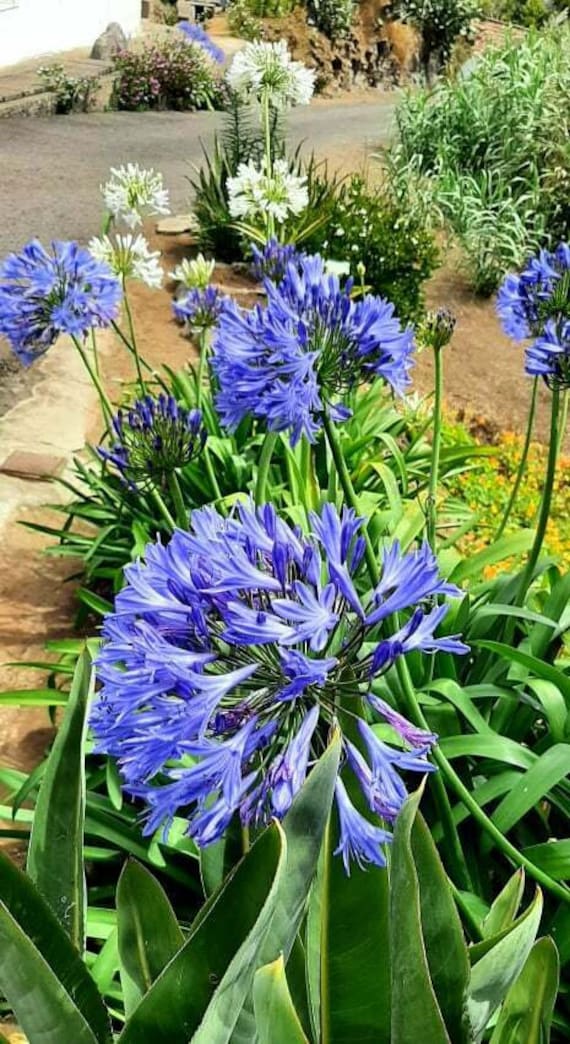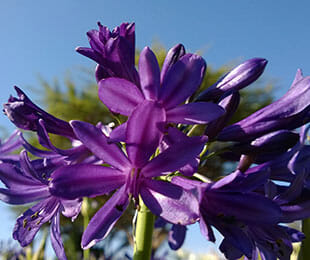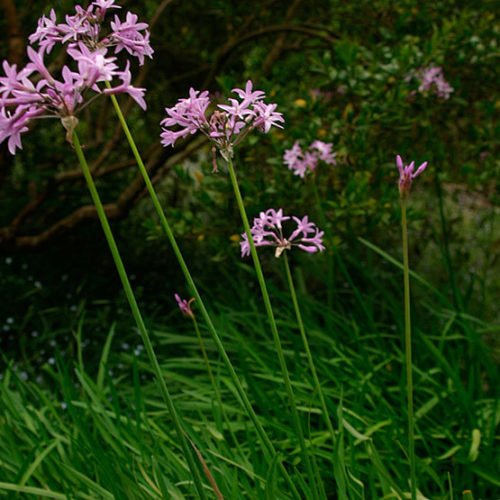Releasing the Secret to Effective Agapanthus Farming: Idea for a Flourishing Garden
In the realm of horticulture, growing agapanthus effectively calls for a strategic method that includes different aspects of plant treatment. With careful attention to detail, one can unlock the tricks to nurturing these spectacular flowers, resulting in a garden that prospers with charm and vibrancy. By comprehending the nuances of agapanthus growing, one can produce a setting where these plants thrive and bloom abundantly. In the following discussion, we will certainly explore important ideas and methods that will certainly guide you in the direction of a prospering agapanthus yard, supplying understandings into best techniques, dirt problems, watering techniques, and more.
Growing Agapanthus: Best Practices
When growing Agapanthus, proper dirt preparation is important for making sure effective growth and growth of these stunning blossoms. Agapanthus, typically known as Lily of the Nile or African lily, flourishes in well-draining soil with a somewhat acidic to neutral pH level - Agapanthus. Prior to growing, it is critical to change heavy clay soils with raw material such as garden compost or peat moss to improve drain and offer necessary nutrients for the plants
To plant Agapanthus, select a place that receives full sunlight to partial color, as this will advertise healthy development and abundant flowering. Dig a hole twice the size of the plant's origin round and put the Agapanthus at the very same depth it was formerly growing. Delicately backfill the opening with dirt, weighing down securely to eliminate any kind of air pockets around the roots.
Water the freshly planted Agapanthus completely and proceed to keep the soil uniformly wet, particularly throughout the plant's energetic growing season. Agapanthus. Using a balanced plant food once a month can further support the plant's development and flowering. By complying with these ideal techniques for growing Agapanthus, you can develop a sensational display screen of these captivating blossoms in your yard
Perfect Soil Conditions for Agapanthus
For ideal growth and blooming success of Agapanthus plants, guaranteeing the dirt problems are suitable is important. Agapanthus flourishes in well-draining dirt with a somewhat acidic to neutral pH level varying from 6.0 to 7.0. This type of soil permits adequate water drainage, avoiding waterlogging which can cause root rot. To enhance dirt water drainage, think about adding natural issue such as compost or peat moss when preparing the planting site. Additionally, Agapanthus favors soil that is rich in nutrients, so integrating a well balanced plant food throughout the expanding season can promote healthy growth and vibrant blooms.

Watering and Fertilizing Tips
To make sure healthy and balanced development and vibrant flowers, correct watering and fertilizing strategies are crucial for successful Agapanthus cultivation. Agapanthus plants benefit from routine watering, specifically throughout the expanding season. It is recommended to water deeply once a week, making sure the dirt is damp however not saturated. Throughout heat or in pots, even more constant watering might be essential to prevent the soil from drying out completely.
When it comes to feeding Agapanthus, a balanced fertilizer with equal components nitrogen, phosphorus, and potassium can be used in the springtime to promote healthy development and blooming. Slow-release fertilizers are optimal for offering nutrients slowly over an extended duration. Stay clear of over-fertilizing, as this can cause extreme vegetation growth at the expense of blooms.
In addition, integrating raw material like garden Visit This Link compost into the soil can enhance nutrient degrees and enhance soil framework, helping in the overall wellness of the Agapanthus plants. By complying with these watering and fertilizing tips, garden enthusiasts can guarantee their Agapanthus plants flourish and generate sensational displays of blossoms.
Pruning and Deadheading Strategies
Correct pruning and deadheading strategies play a critical function in maintaining the wellness and appearances of Agapanthus plants, matching the important techniques of watering and fertilizing for effective cultivation. Trimming Agapanthus involves eliminating spent blossom heads, dead or yellowing leaves, and total shaping of the plant to promote far better growth. Deadheading, the process of getting rid of faded blossoms, not only improves the plant's look but additionally encourages additional growing.
When deadheading Agapanthus, it is recommended to trim off the flower stem at the base utilizing sharp, tidy shears. This procedure redirects the plant's energy from seed production back right into root and foliage development, advertising a healthier and a lot more durable plant. Normal deadheading can prolong the growing duration of Agapanthus and avoid self-seeding, which can cause congestion.
In terms of pruning, Agapanthus normally take advantage of a light trim after blooming to clean the plant and urge fresh growth. Reducing back the invested blossom stems and getting rid of any kind of dead or damaged vegetation helps maintain the plant's vitality and total appearance. Nonetheless, it is important to avoid reducing right into the crown of the plant, as this can damage its wellness.

Protecting Agapanthus From Vermins and Diseases
Implementing effective parasite and illness administration techniques is important to protecting the health and vitality of Agapanthus plants in cultivation. Agapanthus are generally durable plants, however they can still succumb various pests and conditions otherwise correctly cared for. One usual bug that impacts Agapanthus is the Agapanthus borer, a caterpillar that passages into the plant, causing damages to the fallen leaves and flowers. To stop problems, regular inspection of the plants is crucial. If borers are discovered, they can be manually gotten rid of, or insecticidal soap can be made use of as a control procedure.
In addition to read pests, Agapanthus are at risk to diseases such as origin rot and fungal fallen leave spots. These concerns can frequently be stopped by guaranteeing appropriate water drainage and avoiding overwatering. Impacted components of the plant must be immediately removed to stop additional spread if indicators of disease appear. Fungicides might additionally be used as a treatment step, adhering to the supplier's instructions thoroughly. By remaining cautious and addressing insect and illness problems immediately, garden enthusiasts can aid their Agapanthus thrive and flourish.

Verdict
Finally, effective cultivation of agapanthus calls for proper growing techniques, ideal dirt conditions, appropriate watering and feeding, routine trimming and deadheading, and protection from diseases and insects. By adhering to these techniques and pointers, gardeners can make sure a flourishing garden filled with lovely agapanthus blooms. Agapanthus. Keep in mind to keep regular care and interest to information to advertise the health and wellness and long life of these stunning plants
When planting Agapanthus, appropriate dirt prep work is important for making sure effective development and growth of these beautiful flowers.Water the recently grown Agapanthus extensively and proceed to maintain the dirt evenly moist, especially during the plant's active growing season.For ideal development and flowering success of Agapanthus plants, making certain the dirt problems are ideal is essential. When growing or transplanting Agapanthus, make sure the dirt useful reference is well-prepared to supply the essential structure for the plants to develop themselves efficiently. One typical insect that impacts Agapanthus is the Agapanthus borer, a caterpillar that tunnels into the plant, causing damage to the leaves and blossoms.
Comments on “Agapanthus Treatment Tips for Lush and Vibrant Flowers”